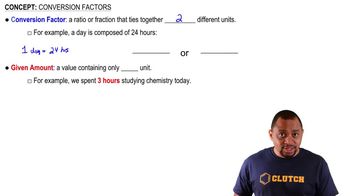Write the equality and two conversion factors, and identify the numbers as exact or give the number of significant figures for each of the following:
b. The Daily Value (DV) for selenium is 70. mcg.
 Verified step by step guidance
Verified step by step guidance Verified video answer for a similar problem:
Verified video answer for a similar problem:



 1:56m
1:56mMaster Conversion Factors (Simplified) Concept 1 with a bite sized video explanation from Jules
Start learning